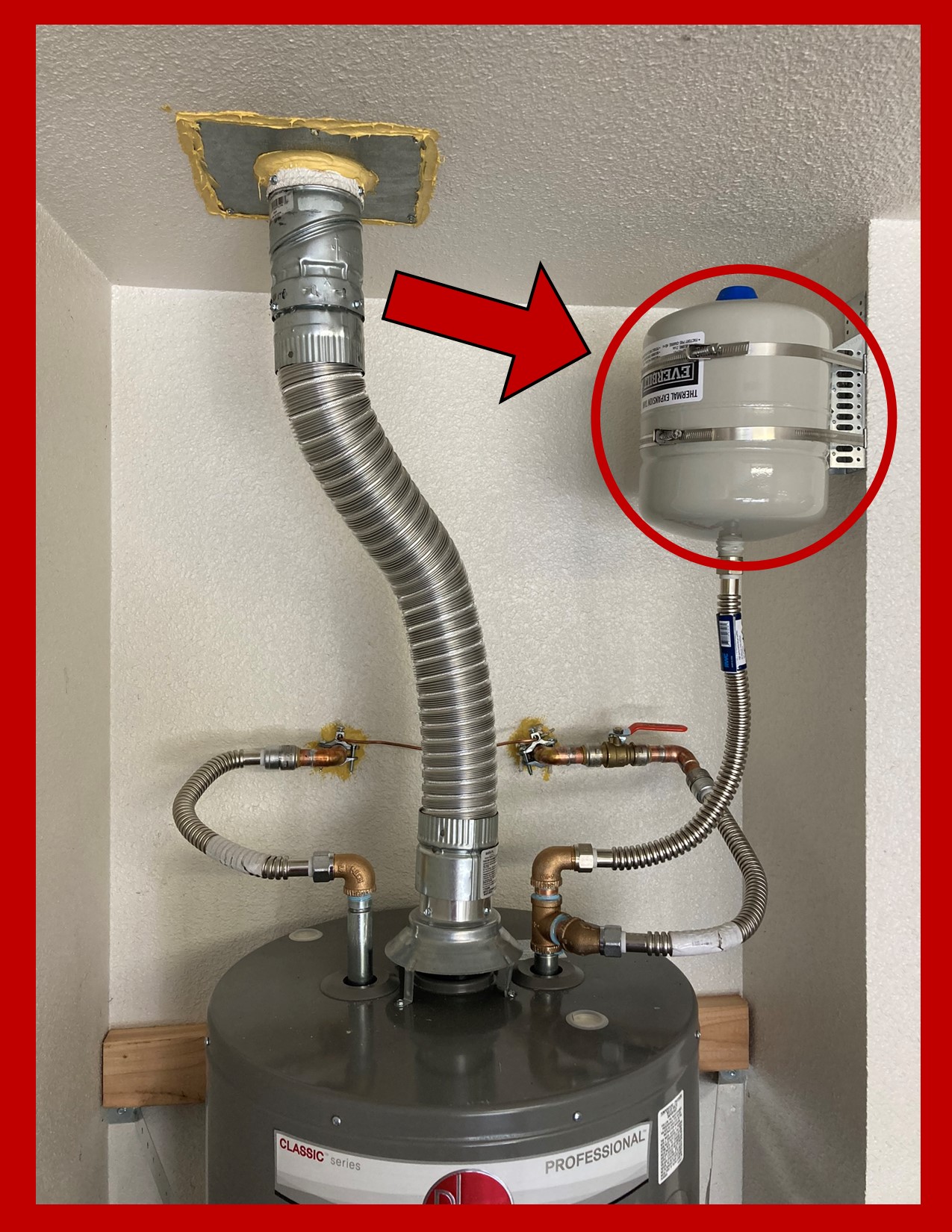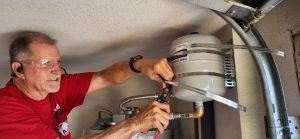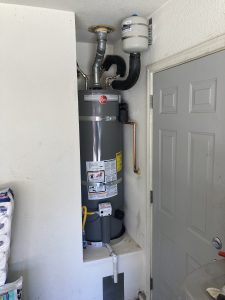
Is Your Water Heater Missing This Vital Part? The Importance of Expansion Tanks
When it comes to water heaters, homeowners often focus on factors like capacity, energy efficiency, and installation costs. However, one crucial component that is frequently overlooked is the expansion tank. This small, often misunderstood device plays a vital role in maintaining the health and efficiency of your water heater system. If your water heater is missing an expansion tank, you could be unknowingly exposing your home to a range of potential issues, from system inefficiencies to costly damage.
What Exactly Is an Expansion Tank?
An expansion tank is a small, usually cylindrical, tank that is installed in your water heater system, typically near the main tank. It consists of two compartments separated by a rubber diaphragm: one filled with air and the other connected to the plumbing system. The purpose of this tank is to absorb the excess pressure that builds up in your water heater as the water heats and expands.
Water is a non-compressible fluid, meaning that when it heats up and expands, it needs somewhere to go. In a closed plumbing system—where there’s no backflow allowed into the municipal water supply—the water can’t expand freely. This is where the expansion tank comes into play. As the water expands, the air-filled side of the expansion tank compresses, allowing the extra water to safely enter the tank without increasing the pressure in your pipes.
Why Is an Expansion Tank So Important?
1. Protects Your Water Heater and Plumbing System
Without an expansion tank, the increasing pressure from thermal expansion has nowhere to go, which puts a significant strain on your water heater and plumbing. This pressure can cause components within your water heater, such as the heating elements or tank lining, to wear out more quickly. Additionally, your pipes and plumbing fixtures are not designed to handle constant high pressure, leading to the risk of leaks, pipe bursts, or even complete system failure. An expansion tank absorbs this pressure, reducing wear and tear and extending the lifespan of your entire system.
2. Prevents Water Hammer and Other Pressure-Related Issues
Excess pressure in your plumbing system can also lead to a phenomenon known as water hammer. This occurs when water suddenly stops or changes direction within the pipes, creating a loud banging noise. Water hammer isn’t just annoying; it can also damage your pipes and fixtures. An expansion tank helps to mitigate this issue by providing a cushion for the pressure, preventing the sudden stops and changes in water flow that cause water hammer.
3. Improves System Efficiency
When your water heater is under constant pressure, it has to work harder to maintain the desired water temperature. This added strain can reduce the efficiency of the system, leading to higher energy bills. By installing an expansion tank, you alleviate this pressure, allowing your water heater to operate more efficiently. Over time, this can result in noticeable savings on your energy costs, making the expansion tank a wise investment.
4. Ensures Compliance with Local Codes and Regulations
Many homeowners are unaware that local building codes often require the installation of an expansion tank when a new water heater is installed. These regulations are in place because authorities recognize the potential hazards of thermal expansion in closed plumbing systems. If your water heater is missing an expansion tank, you may be in violation of these codes, which could become an issue when selling your home or filing an insurance claim. Additionally, non-compliance with these codes could lead to failed inspections, causing delays and additional expenses in home projects.
5. Protects Your Home from Water Damage
One of the most serious risks of not having an expansion tank is the potential for water damage. High pressure in your plumbing system can lead to leaks, which may start small but can quickly escalate into significant damage. Water leaks can cause structural damage to your home, leading to costly repairs. In worst-case scenarios, a pipe burst could result in flooding, causing extensive damage to flooring, walls, and personal belongings. An expansion tank helps to prevent these issues by maintaining a safe pressure level in your plumbing system.
6. Increases the Lifespan of Your Water Heater
Water heaters are a significant investment, and like any investment, you want it to last as long as possible. Without an expansion tank, the constant stress from thermal expansion can shorten the lifespan of your water heater. Components like the tank lining, heating elements, and valves can wear out faster under pressure, leading to premature failure. By installing an expansion tank, you reduce the strain on these components, helping your water heater last longer and saving you money on repairs and replacements.
Common Misconceptions About Expansion Tanks
1. “My Water Heater Didn’t Come with an Expansion Tank, So I Don’t Need One”
Just because your water heater didn’t come with an expansion tank doesn’t mean it doesn’t need one. Many older homes and water heaters were installed without expansion tanks because building codes didn’t require them at the time. However, modern plumbing standards have changed, and the risks of thermal expansion are now better understood. Installing an expansion tank on an older system can provide the same benefits as installing one on a new system, including protecting your home from potential damage.
However, it’s important to note that in some cases, adding an expansion tank to an older water heater may not be possible due to liability concerns. If your water heater is past the manufacturer’s recommended lifespan, which is typically 12 years for gas water heaters and 15 years for electric models, adding an expansion tank could be risky. The older the system, the more likely it is that something could go wrong after the installation, potentially leading to leaks, failures, or other issues. In such cases, the plumber could still be held liable, even if the issue was due to the age of the water heater and not the installation itself.
At A2Z Water Heaters, we recommend replacing your gas water heaters every 12 years and your electric water heaters every 15 years, provided they were installed correctly and are flushed out once a year. Regular maintenance, including annual flushes, helps extend the life of your water heater and ensures it operates efficiently. However, if your water heater hasn’t been properly maintained or if you don’t have an expansion tank, you may need to replace it sooner.
It’s always best to consult with the plumber of your choice to assess the condition of your water heater and determine the best course of action. At A2Z Water Heaters, we’re happy to provide you with all the information you need to make an informed decision.
2. “I Have a Pressure Relief Valve, So I Don’t Need an Expansion Tank”
While a pressure relief valve is a critical safety feature, it’s not a substitute for an expansion tank. A pressure relief valve is designed to release water when the pressure reaches a dangerous level, preventing a catastrophic failure of the water heater. However, it doesn’t prevent the pressure from building up in the first place. An expansion tank, on the other hand, absorbs the pressure before it reaches dangerous levels, preventing the relief valve from being triggered unnecessarily and reducing wear on the system.
Think about it this way: if your water heater doesn’t have an expansion tank, the temperature and pressure (T&P) relief valve becomes your only line of defense. If that valve is damaged, old, or fails to operate when your water heater reaches dangerous pressure levels, the results could be disastrous, potentially leading to an explosion that causes severe physical damage and water damage to your home. An expansion tank, however, acts as a buffer, regulating pressure before it ever becomes an issue. This can save your water heater from unnecessary strain and protect your home from costly damage.
Ideally, both the expansion tank and the T&P relief valve are in perfect working order, functioning together to provide maximum protection. But relying solely on one safety measure is like putting all your eggs in one basket. By having both in place, they work in tandem to prevent problems and ensure your water heater operates safely and efficiently, giving you peace of mind.
3. “Expansion Tanks Are Only Necessary in Certain Types of Homes”
Some homeowners believe that expansion tanks are only necessary in homes with specific types of plumbing systems, such as those with backflow prevention devices. While it’s true that these homes are at a higher risk for pressure-related issues, the truth is that any closed plumbing system can benefit from an expansion tank. Regardless of your home’s setup, an expansion tank provides a safety net that helps protect your water heater and plumbing system from the risks associated with thermal expansion.
In fact, expansion tanks are not just a good idea—they’re required by California building code. This regulation is in place because the state recognizes the potential dangers of unchecked thermal expansion. By requiring expansion tanks, California aims to ensure that all homeowners have an added layer of protection for their water heaters and overall plumbing systems. Compliance with this code not only safeguards your home but also helps you avoid potential fines and complications during inspections or property sales.
Signs Your Water Heater is Struggling Without an Expansion Tank
If your water heater lacks an expansion tank and is showing the following signs of pressure-related issues, it’s time to consult with your plumber about installing an expansion tank or, if necessary, replacing your current water heater and ensuring a new one is equipped with this vital component.
- Frequent Activation of the Pressure Relief Valve: If your water heater’s pressure relief valve frequently releases water, it’s a sign that the pressure in your system is too high. This could indicate a need for an expansion tank to help manage the pressure.
- Visible Leaks Around the Water Heater: If you notice water pooling around your water heater or leaks in your plumbing system, it could be a sign that the pressure is too high due to thermal expansion. Installing an expansion tank can help prevent these leaks from worsening.
- Unusual Noises in the Plumbing System: Banging, knocking, or other unusual noises in your plumbing system can indicate water hammer, which is often caused by high pressure. An expansion tank can help reduce this pressure and eliminate the noises.
- Recent Water Heater Installation: If you’ve recently installed a new water heater but didn’t add an expansion tank, it’s a good idea to reconsider. Adding an expansion tank can protect your investment and ensure your system operates safely and efficiently.
Installing an Expansion Tank: A Job for the Professionals
While some homeowners may be tempted to install an expansion tank themselves, it’s a job best left to the professionals. Proper installation is crucial to ensure the expansion tank functions correctly and provides the protection your system needs. At A2Z Water Heaters, we specialize in water heater installations, including the addition of expansion tanks. With Fred’s extensive experience as both a plumber and a general contractor before specializing in water heaters, he has a fantastic understanding of plumbing systems. This expertise ensures that your expansion tank is installed safely and correctly, providing peace of mind and long-term protection for your home.
Conclusion: Don’t Overlook the Importance of an Expansion Tank
Expansion tanks may be small, but they play a crucial role in maintaining the safety and efficiency of your water heater system. Without one, your home could be at risk for leaks, pipe bursts, and even water heater failure. By installing an expansion tank, you can protect your home, extend the life of your water heater, and improve your system’s efficiency.
When you choose A2Z Water Heaters, you’re choosing more than just a service; you’re choosing peace of mind. As a family-owned business with over 17 years of experience, we take pride in our work and our reputation. Fred and Joey personally handle every installation, ensuring that each job meets our high standards of quality and safety. From the initial consultation to the final inspection, we’re with you every step of the way, handling all necessary permits, inspections, and warranty registrations, so you don’t have to worry about a thing.
At A2Z Water Heaters, we understand the critical role expansion tanks play in protecting your home’s plumbing system. Whether you’re looking to add an expansion tank to your existing setup or need a new water heater installation that includes this vital component, we’re here to help. Don’t wait until pressure-related issues arise—reach out to Fred anytime on his personal phone at 916-402-9006. We’re always available to answer your questions, provide ongoing support, and ensure your water heater is equipped with the protection it needs for your home’s safety and comfort.

